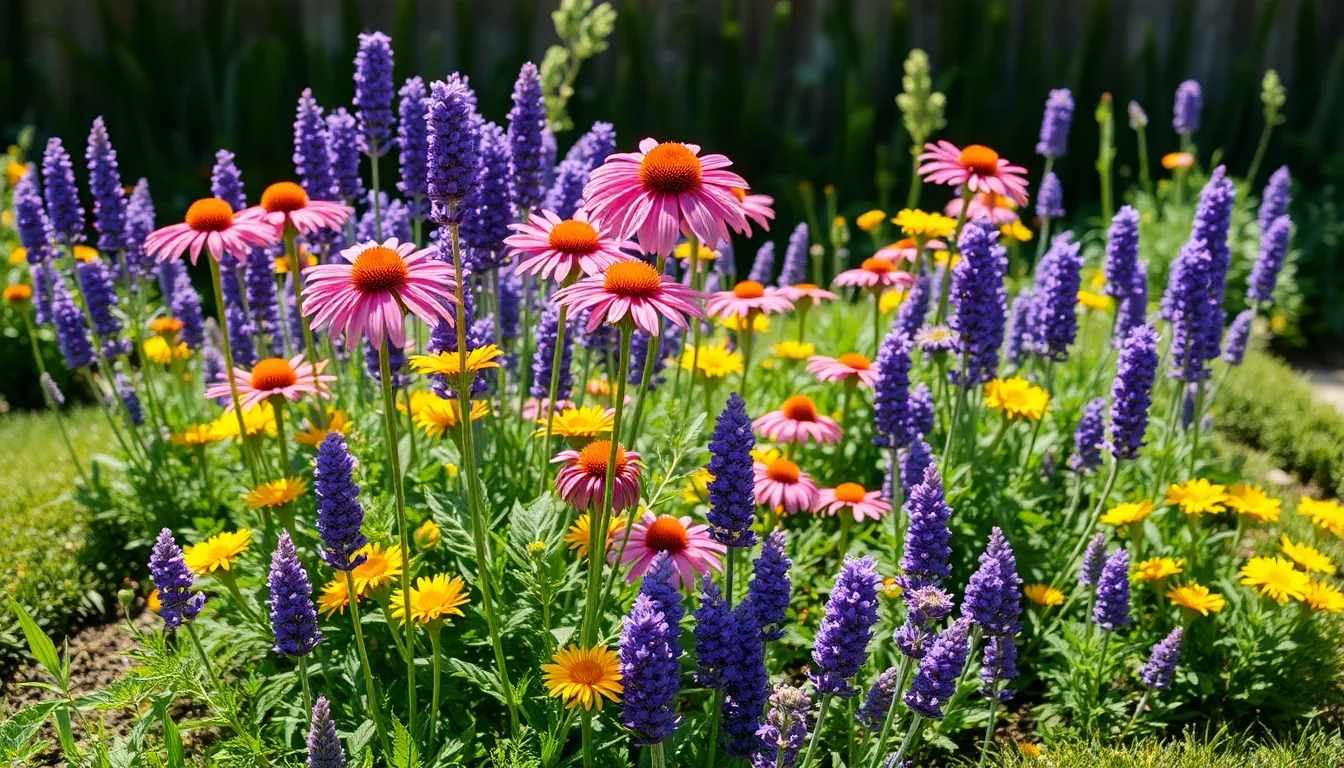Creating a pollinator garden is a beautiful way to invite nature into your backyard while playing a vital role in supporting biodiversity. Whether you’re an enthusiastic beginner or a seasoned gardener, designing a haven for bees, butterflies, and other pollinators promises to transform your outdoor space into a buzzing paradise. In a world where pollinator populations are declining, your garden can make a meaningful difference, offering a sanctuary for these essential creatures. By fostering such an environment, you not only enrich your garden’s beauty but also contribute to the health of our ecosystems.
In this guide, you’ll discover practical tips for selecting the right plants and planning your garden layout to attract a diverse array of pollinators. We’ll explore the importance of choosing native plants and how to create a continuous bloom throughout the seasons, ensuring a reliable food source for your garden visitors. You’ll also learn how to provide essential habitats that cater to the needs of different pollinators, from nesting sites for bees to shelter for butterflies. Together, we’ll unravel the art and science of pollinator-friendly gardening, empowering you to nurture a thriving natural community right at home.
Select Native Pollinator Plants
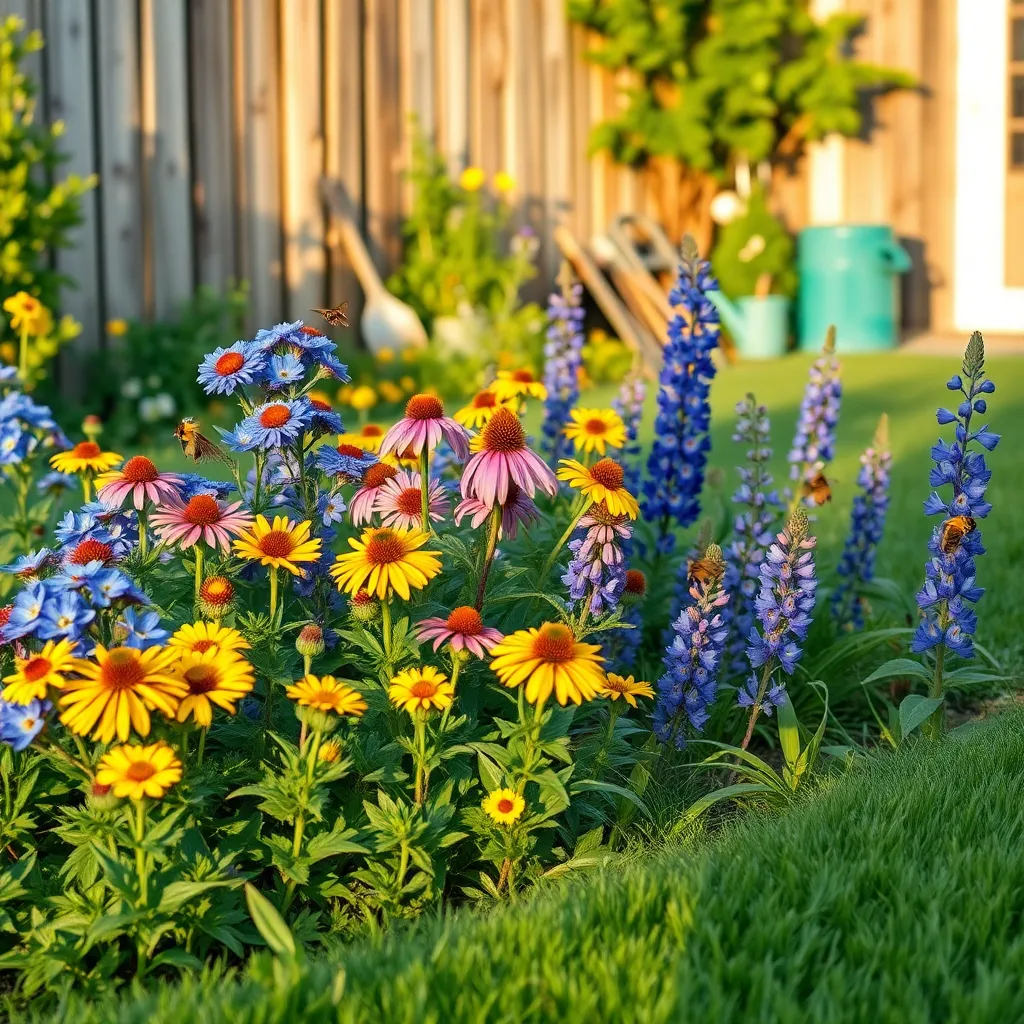
When selecting native pollinator plants, choose species that are well-adapted to your local climate and soil conditions. Native plants are generally more resilient, require less water, and provide essential resources for local pollinators such as bees, butterflies, and hummingbirds.
Start by identifying the type of soil in your garden—whether it’s sandy, clay, or loamy—as this will help you select the right plants. For example, Black-eyed Susans thrive in well-drained soils and full sun, making them a perfect choice for many gardens.
Consider the blooming period of each plant to ensure a continuous supply of nectar and pollen throughout the growing season. A mix of early, mid, and late-season bloomers like Lupines, Milkweeds, and Asters will keep your pollinator garden buzzing with life.
Planting in groups rather than singly will attract more pollinators, as they are more likely to notice clusters of the same color and type. Water your new plants regularly until they are established, then reduce watering to mimic their natural environment.
Plan Garden Layout Strategically

When planning your garden layout strategically, consider the specific needs of each plant to ensure they thrive. Grouping plants with similar sunlight and watering requirements can make maintenance more efficient and increase the overall health of your garden.
Think about the height and spread of your plants to create a visually appealing and accessible layout. Taller plants, like sunflowers or hollyhocks, should be placed at the back or center, ensuring they don’t overshadow shorter varieties.
To attract a variety of pollinators, include a diverse mix of plants that bloom at different times throughout the growing season. This approach will provide consistent food sources for pollinators, enhancing your garden’s ecological diversity.
Incorporate pathways or stepping stones to facilitate easy access for gardening tasks such as weeding and deadheading. This not only improves the garden’s aesthetic but also minimizes soil compaction, which is crucial for healthy root systems.
Prepare Soil for Planting
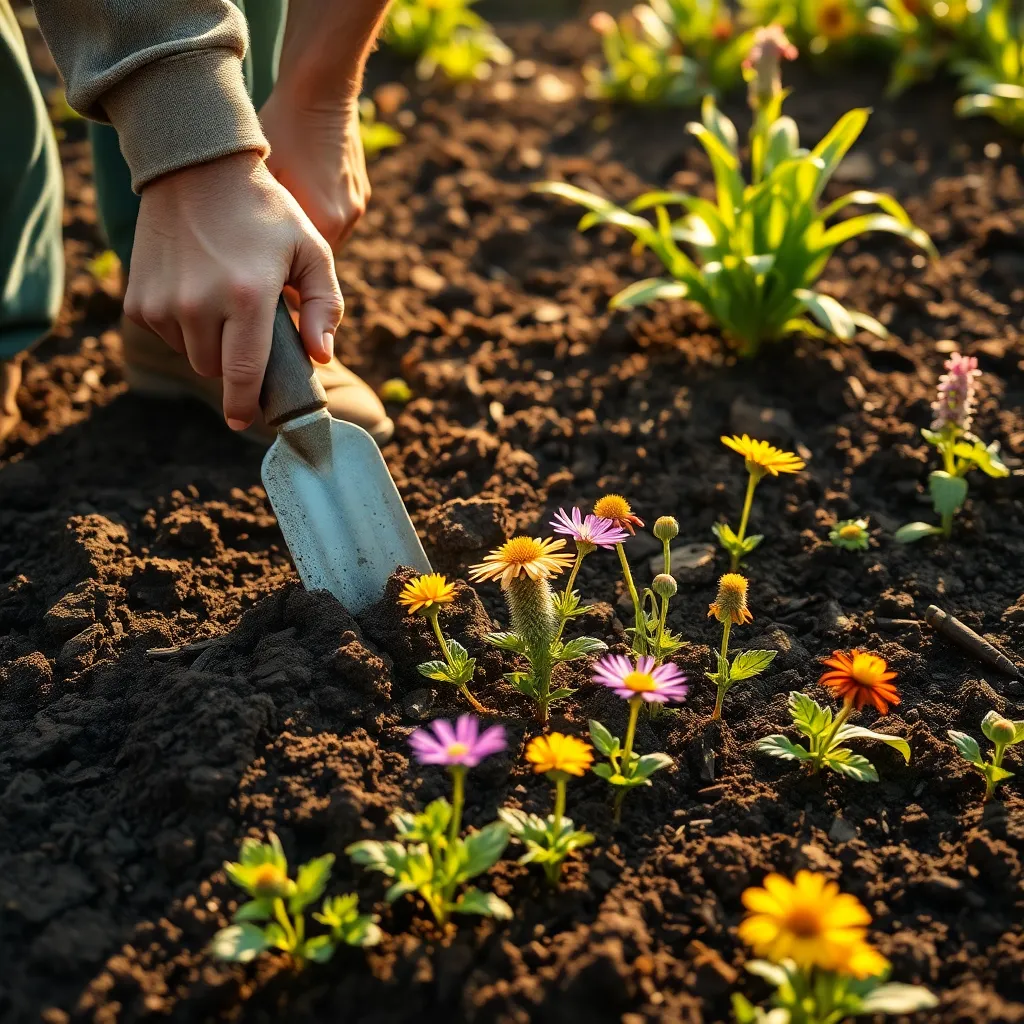
Before planting, it is crucial to ensure your soil is ready to support vibrant plant life. Start by testing your soil’s pH levels, as pollinator-friendly plants often thrive in neutral to slightly acidic soil.
Amend your soil by adding compost to improve its texture and fertility. Compost enriches the soil with essential nutrients and helps maintain moisture, creating an ideal environment for pollinator plants.
For those dealing with clay-heavy soil, incorporate sand or perlite to improve drainage. This step prevents waterlogging, which can be detrimental to the roots of your plants, especially in a pollinator garden.
Consider using organic mulch, such as shredded leaves or bark, on top of your soil. Mulch helps to retain moisture and suppresses weeds, ensuring that your pollinator plants have the best growing conditions possible.
Plant with Seasonal Blooms
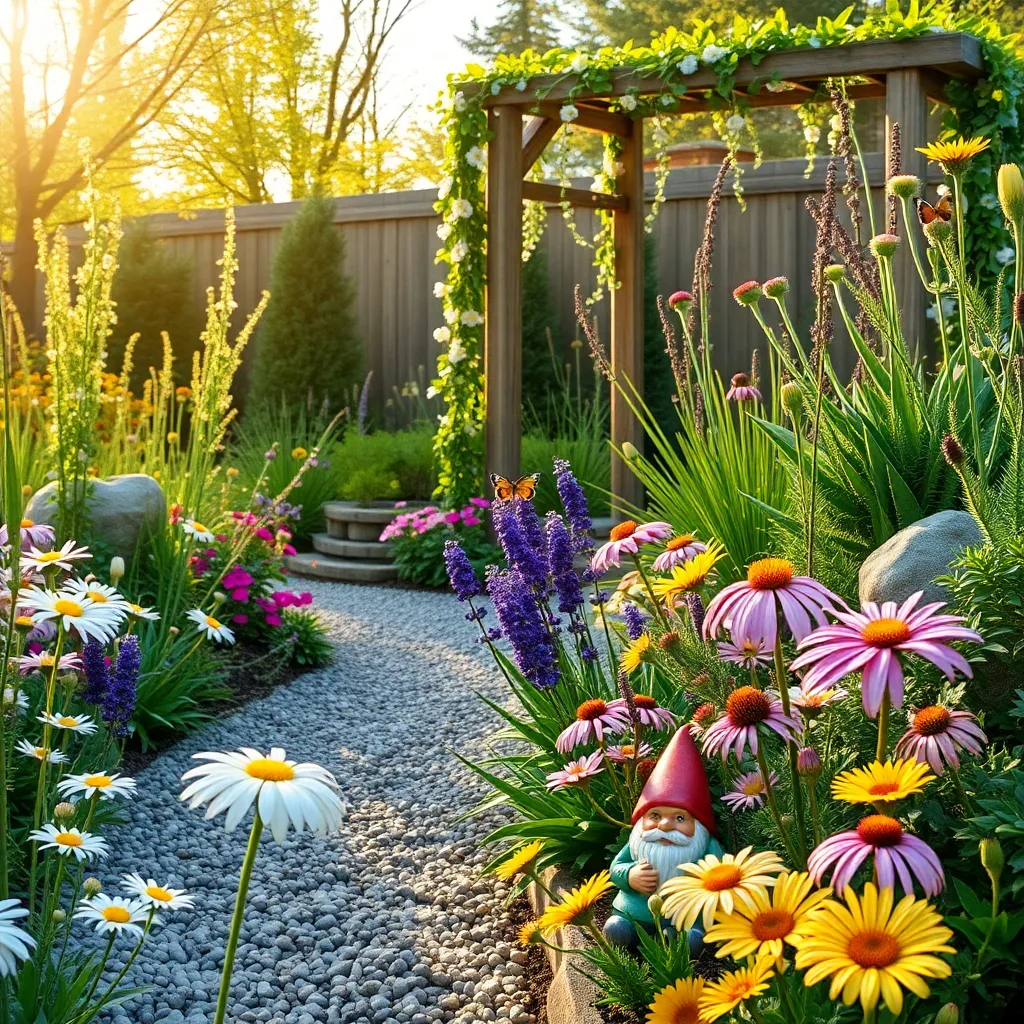
To create a thriving pollinator garden, choosing plants with seasonal blooms is crucial. By selecting plants that bloom at different times throughout the year, you can ensure that pollinators have a consistent food source.
Start by planting early-blooming species such as crocuses and snowdrops, which are a beacon for pollinators emerging in spring. These plants generally require well-drained soil and a sunny location to flourish.
As the season progresses, incorporate mid-season bloomers like coneflowers and lavender. These are not only beautiful but also attract a wide array of pollinators, and thrive in full sun with moderate watering.
Finally, extend the welcoming environment for pollinators into late fall with asters and goldenrods. Both plants require minimal care and are drought-tolerant, making them ideal for beginners and advanced gardeners alike.
Advanced tip for enthusiasts: Consider interplanting different species to create a layered bloom effect. This technique not only maximizes visual appeal but also enhances the habitat for pollinators, offering them shelter and diverse food sources.
Create Water and Shelter Sources
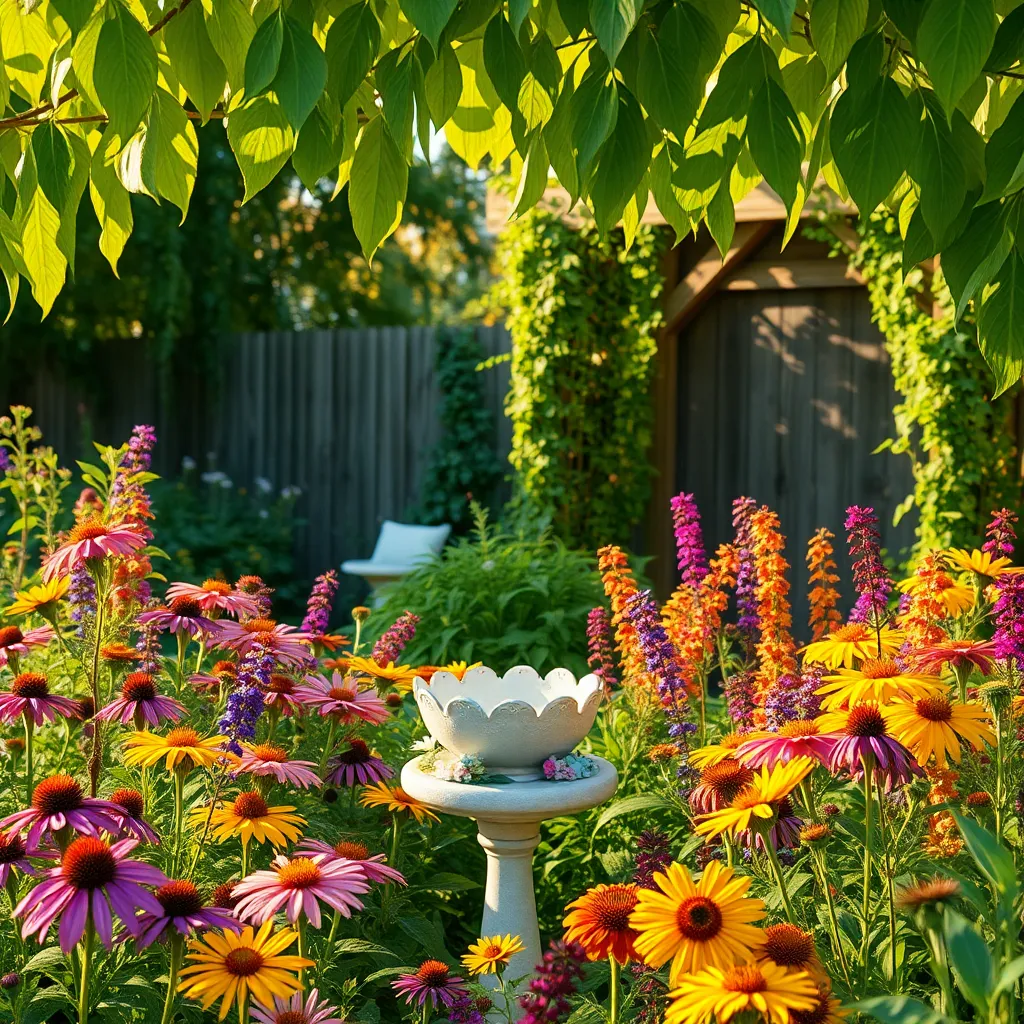
To attract a diverse array of pollinators, it’s essential to provide a consistent water source. Consider installing a shallow birdbath or a simple dish filled with water and stones to prevent drowning, ensuring the water is clean and refreshed regularly.
Shaded areas are just as vital as water, offering pollinators a place to rest during hot days. You can create these shelters by planting dense shrubs or installing a small garden trellis with climbing plants like clematis or morning glory.
Natural materials can be used to build simple shelters that mimic the environment. For instance, a small pile of stones or a bundle of sticks can provide excellent hideaways for solitary bees and other beneficial insects.
Adding native grasses and wildflowers not only enhances shelter but also improves biodiversity. These plants often require minimal maintenance, thriving in well-drained soil with moderate watering, making them a practical choice for beginners and experts alike.
Conclusion: Growing Success with These Plants
As we wrap up our journey into designing a pollinator garden, let’s reflect on the relationship concepts we’ve explored: understanding the symbiotic dance between plants and pollinators, recognizing the importance of diversity in nurturing a thriving ecosystem, valuing patience and growth over time, acknowledging the need for consistent care and attention, and appreciating the beauty of seasonal changes. These principles echo the heart of nurturing any meaningful relationship.
Now, as you stand ready to apply these lessons, take the next step by selecting a small area in your garden or yard to start your pollinator paradise. Plant a variety of flowers that bloom at different times to ensure a continuous buffet for your buzzing and fluttering friends.
To keep these insights at your fingertips, bookmark this guide as your go-to resource for cultivating both your garden and your relationships. As you nurture your garden, remember that the patience and care you invest will blossom into a vibrant, flourishing environment.
Looking forward, the dedication you apply to your garden can mirror the success you cultivate in your relationships. Embrace this journey with warmth and curiosity, and watch both your garden and your personal connections thrive.

